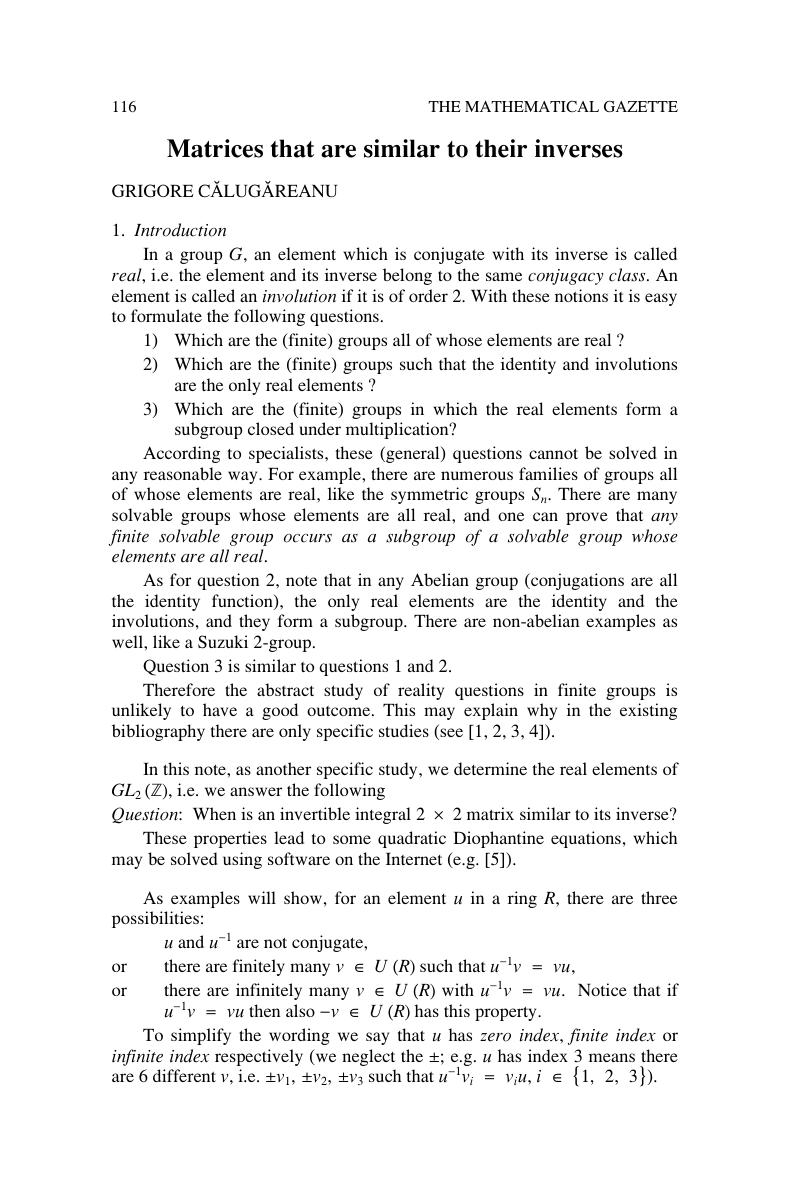No CrossRef data available.
Article contents
Matrices that are similar to their inverses
Published online by Cambridge University Press: 02 March 2020
Abstract
An abstract is not available for this content so a preview has been provided. Please use the Get access link above for information on how to access this content.

- Type
- Articles
- Information
- Copyright
- © Mathematical Association 2020
References
Berrgren, J. L., Finite groups in which every element is conjugate to its inverse, Pac. J. of Math. 28 (1969) pp. 289–293.10.2140/pjm.1969.28.289CrossRefGoogle Scholar
Gow, R., Groups whose characters are rational-valued, J. of Algebra 40 (1) (1976) pp. 280–299.10.1016/0021-8693(76)90098-3CrossRefGoogle Scholar
Gow, R., Properties of the characters of the finite general linear group related to the transpose-inverse involution, Proc. London Math. Soc. (3) 47 (1983) (3) pp. 493–506.10.1112/plms/s3-47.3.493CrossRefGoogle Scholar
Hegedüs, P., Groups where each element is conjugate to its certain power, Cent. Eur. J. Math. 11 (10) (2013) pp. 1742–1749.Google Scholar
Alpern, D., Generic two integer variable equation solver, available at https://www.alpertron.com.ar/QUAD.HTMGoogle Scholar
Isaacs, I. M., Karagueuzian, D., Conjugacy in groups of upper triangular matrices, J. of Algebra 202 (1998) pp. 704–711.10.1006/jabr.1997.7311CrossRefGoogle Scholar
Brown, W. C., Matrices over commutative rings, Monographs and textbooks in pure and applied mathematics. New York, M. Dekker, (1993).Google Scholar




